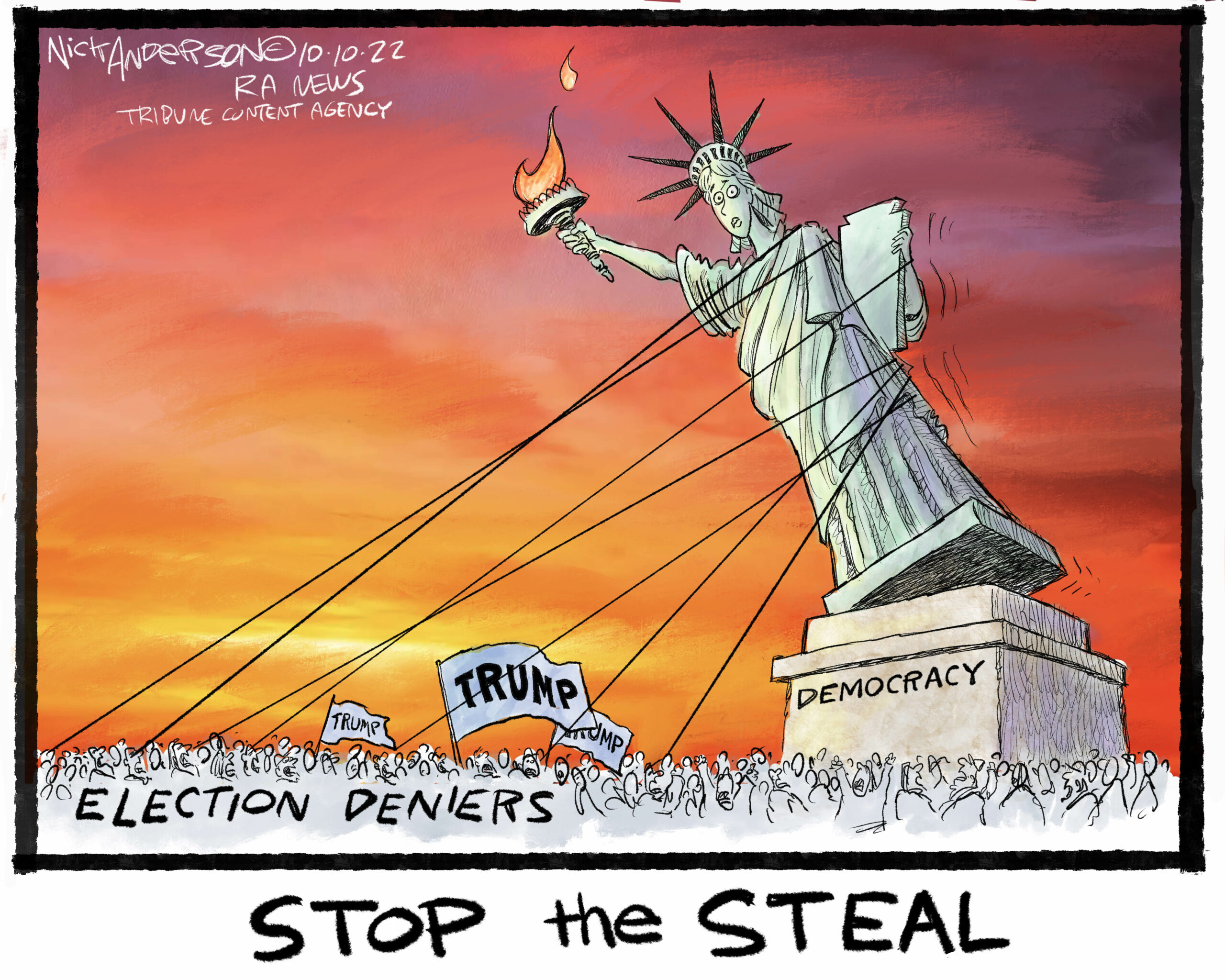

Stop the Steal 2.0: Your Action Plan for Election Integrity
The 2020 election ignited a firestorm of debate surrounding election integrity, leaving many feeling unheard and questioning the process. While accusations flew, concrete solutions often felt elusive. “Stop the Steal 2.0” isn’t about relitigating the past; it’s about proactively building a more transparent and trustworthy electoral future. This isn’t a partisan issue; it’s about safeguarding the bedrock of our democracy. This action plan outlines concrete steps individuals can take to ensure fair and accurate elections, regardless of political affiliation.
Phase 1: Understanding the Landscape
Before we can fix problems, we must understand them. This phase focuses on education and critical thinking.
-
Mythbusting: The internet is awash in misinformation. Develop a healthy skepticism. Cross-reference information from multiple reputable sources before accepting it as fact. Fact-checking websites like Snopes and PolitiFact are invaluable tools.
-
Election Law 101: Familiarize yourself with your state’s election laws. Understanding voter registration deadlines, identification requirements, and absentee voting procedures empowers you to participate effectively and advocate for improvements. The National Conference of State Legislatures (NCSL) website is a great resource.
-
Local Election Officials: Contact your county election officials. They are often overlooked but are on the front lines of election administration. Ask questions about their processes, challenges, and any proposed reforms.
Phase 2: Becoming an Active Participant
This phase moves beyond passive observation to active engagement.
-
Become a Poll Worker: One of the most effective ways to understand the election process is to be a part of it. Poll workers are essential, and many jurisdictions are actively recruiting.
-
Monitor Your Local Elections: Attend local election meetings, observe the vote counting process (where permitted), and report any irregularities you observe to the appropriate authorities.
-
Support Election Integrity Organizations: Many non-partisan organizations work to improve election security and transparency. Research and support those aligned with your values.
Phase 3: Advocating for Change
This final phase focuses on systemic improvements.
-
Promote Voter Education: Inform your community about the importance of accurate voter registration, proper ballot handling, and the dangers of misinformation.
-
Support Election Reform Legislation: Advocate for legislation that improves election security, such as improved voter verification systems, enhanced cybersecurity measures, and increased transparency in the counting process.
-
Engage in Civil Discourse: Productive conversations, even with those who hold differing opinions, are crucial for building consensus around election integrity. Focus on shared goals, such as accurate and fair elections.
| Action Step | Impact | Effort Level |
|---|---|---|
| Become a Poll Worker | Direct observation of election procedures | Medium |
| Contact Election Officials | Access to local insights and concerns | Low |
| Support Election Reform | Systemic change for greater integrity | High |
| Fact-Check Information | Reduce misinformation’s impact | Low |
Conclusion:
“Stop the Steal 2.0” is not about fueling division; it’s about fostering a shared commitment to fair and accurate elections. By actively participating in the process, advocating for reform, and promoting informed civic engagement, we can build a more robust and trustworthy electoral system for all. The future of our democracy depends on it.

Additional Information
Stop the Steal 2.0: A Deeper Dive into its Claims and Implications
The emergence of “Stop the Steal 2.0” and similar movements represents a significant development in the ongoing debate surrounding election integrity in the United States. While claims of widespread fraud underpinning these movements continue to be rejected by courts and election officials, understanding their underlying narratives, strategies, and impacts is crucial for a robust assessment of their potential consequences. This analysis delves deeper into the movement, examining its claims, the evidence (or lack thereof) supporting them, and its broader implications for democratic processes.
I. Core Claims and their Factual Basis:
“Stop the Steal 2.0” narratives often center on several recurring themes, all lacking substantial evidence:
-
Dominion Voting Systems Fraud: This remains a central pillar, despite repeated audits and investigations finding no evidence of widespread fraud influencing election results. Claims often focus on alleged statistical anomalies, software vulnerabilities, and backdoor access. However, these assertions frequently rely on misinterpretations of statistical data, lack verifiable technical expertise, and are often contradicted by independent cybersecurity experts and election officials. For instance, the alleged statistical anomalies often stem from a misunderstanding of normal variations in vote counts across different demographics and regions.
-
Voter Fraud: Allegations of widespread voter fraud, including ballot harvesting, dead people voting, and duplicate voting, continue to persist. However, studies by organizations like the Brennan Center for Justice consistently demonstrate that voter fraud is extremely rare and statistically insignificant in influencing election outcomes. While isolated instances of fraud may occur, they are typically caught and prosecuted, and do not represent a systemic problem capable of altering election results.
-
Election Equipment Manipulation: Claims of manipulated voting machines and software remain a recurring concern. While concerns regarding election security are valid and require continuous improvement, the specific claims made by “Stop the Steal 2.0” often lack technical rigor and are unsupported by credible evidence. Independent audits and reviews consistently fail to corroborate these allegations.
II. Strategic Approaches and Tactics:
The movement employs several strategies to disseminate its narratives and influence public opinion:
-
Social Media Amplification: Social media platforms, despite efforts to curb misinformation, remain crucial vectors for disseminating “Stop the Steal 2.0” content. The use of targeted advertising, algorithmic amplification, and the creation of echo chambers facilitates the spread of false narratives and fuels polarization.
-
Legal Challenges: While many legal challenges based on similar claims have been dismissed for lack of evidence, the movement continues to pursue legal avenues, further contributing to the perception of systemic issues, even in the absence of credible evidence. These legal challenges often serve as a fundraising tool and a means to sustain the narrative.
-
Grassroots Mobilization: The movement actively encourages grassroots mobilization, seeking to influence local election officials and engage in voter intimidation tactics. This can undermine public trust in the election process and discourage participation.
III. Implications and Consequences:
The continued promotion of “Stop the Steal 2.0” narratives has several significant implications:
-
Erosion of Public Trust: Repeated unsubstantiated claims of election fraud erode public trust in democratic institutions and processes. This can lead to decreased voter turnout and increased political polarization.
-
Increased Political Violence: The rhetoric employed by the movement can incite violence and harassment against election officials, poll workers, and those perceived as opposing the movement. The January 6th Capitol attack serves as a stark reminder of the potential for violent extremism fueled by such narratives.
-
Undermining Democratic Norms: The persistent questioning of legitimate election results without credible evidence undermines democratic norms and the peaceful transfer of power. This creates instability and weakens the foundations of democratic governance.
IV. Recommendations:
Addressing the challenges posed by “Stop the Steal 2.0” requires a multi-pronged approach:
-
Improved Media Literacy: Promoting media literacy education to help citizens critically evaluate information and identify misinformation is crucial.
-
Strengthening Election Security: Continuously improving election security measures, including auditing processes and cybersecurity protocols, is necessary to build public trust. Transparency in these processes is vital.
-
Accountability for Misinformation: Holding individuals and organizations accountable for spreading false and misleading information is essential to deter future attempts to undermine democratic processes.
-
Promoting Civil Discourse: Encouraging respectful and evidence-based dialogue is crucial to counter the divisive rhetoric and polarization fueled by movements like “Stop the Steal 2.0.”
In conclusion, “Stop the Steal 2.0” represents a serious threat to democratic stability. A deeper understanding of its tactics, claims, and implications is crucial to develop effective strategies to mitigate its harmful effects and safeguard the integrity of democratic processes. This requires a collaborative effort from government agencies, civil society organizations, technology platforms, and individual citizens committed to preserving a fair and trustworthy electoral system.




